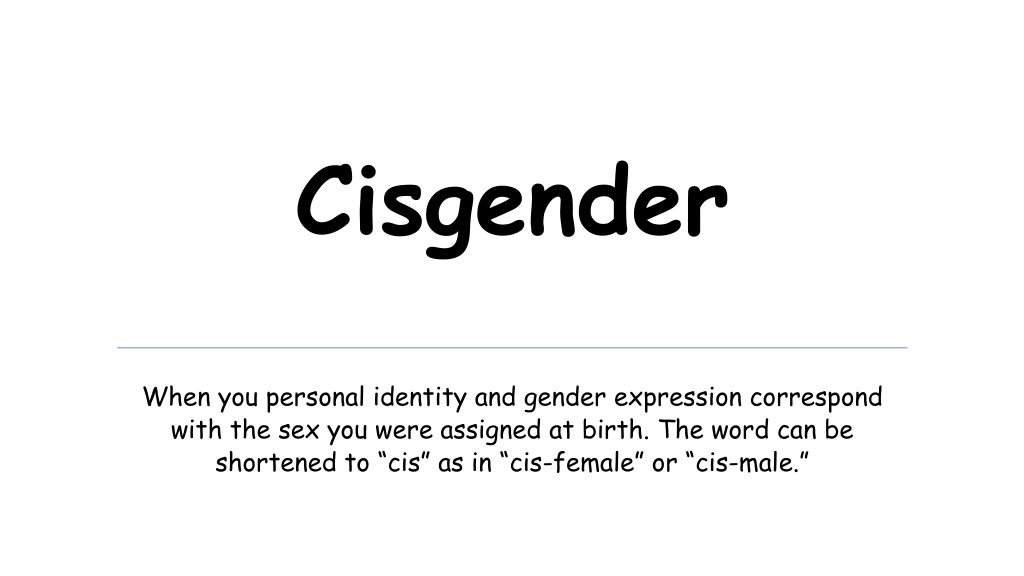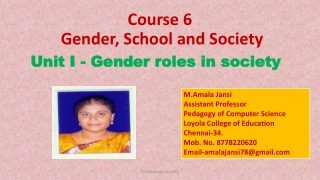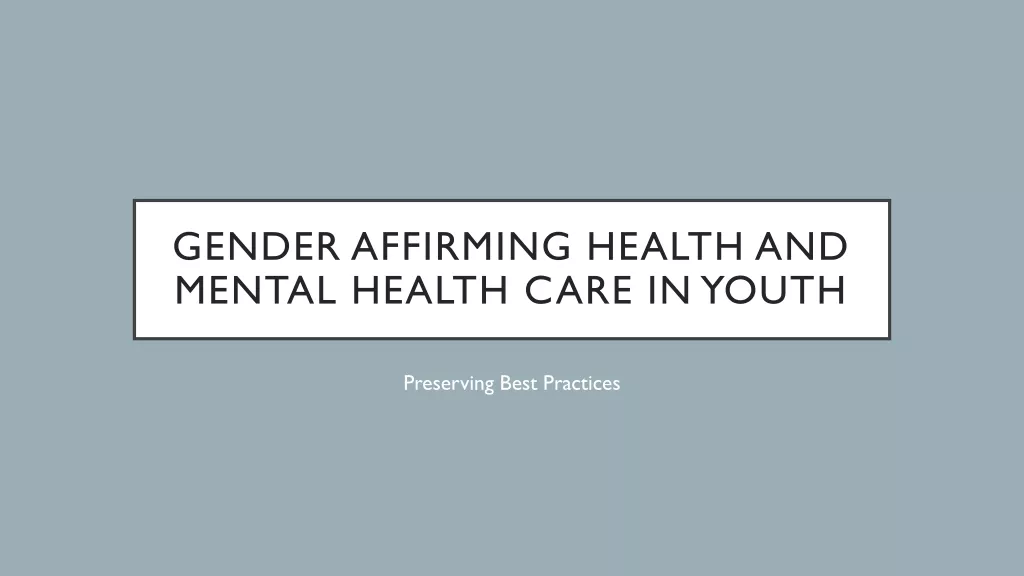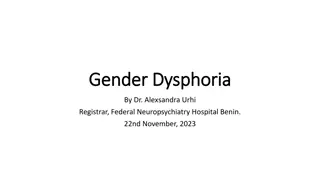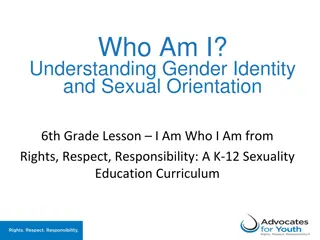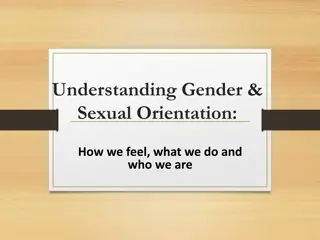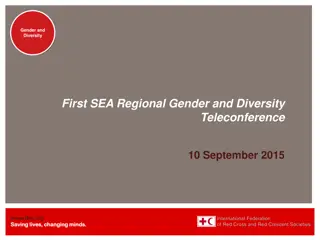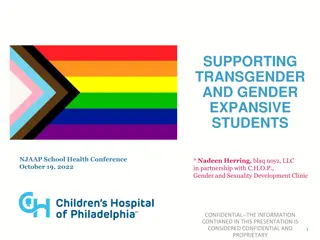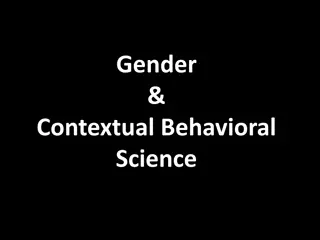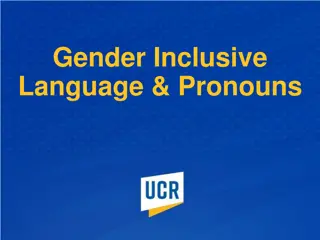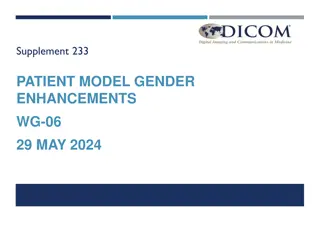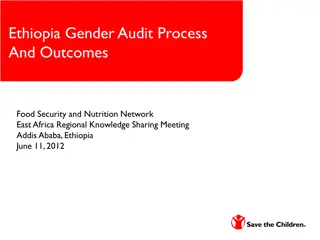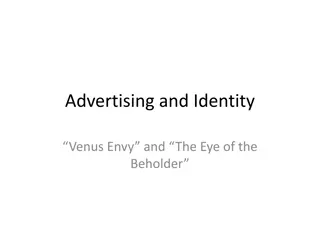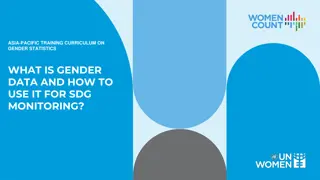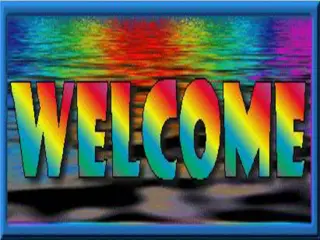Understanding Gender Diversity and Identity
Explore the diverse concepts of gender identity, from cisgender to nonbinary, agender, and beyond. Learn about sexual orientation, advocacy, and supporting the LGBTQ community. Embrace the fluidity and complexity of personal gender expression.
Download Presentation

Please find below an Image/Link to download the presentation.
The content on the website is provided AS IS for your information and personal use only. It may not be sold, licensed, or shared on other websites without obtaining consent from the author. Download presentation by click this link. If you encounter any issues during the download, it is possible that the publisher has removed the file from their server.
E N D
Presentation Transcript
Cisgender When you personal identity and gender expression correspond with the sex you were assigned at birth. The word can be shortened to cis as in cis-female or cis-male.
Femme A person who identifies as having traditionally feminine traits.
Gender The social construction, or performance of your role in a society based on dominant culture s creation of what is masculine or feminine. Your gender is not defined by the sex you were assigned at birth.
Gender Identity Your personal sense of who you are; it may be different or the same as the sex you were assigned at birth.
Heterosexual A person who is attracted to a person of the opposite sex.
Nonbinary People who identify as having no gender or a gender in between being a man or a woman. It is a diverse category and not every nonbinary person feels the same way.
Sexual Orientation A social identity that corresponds with the gender that you are attracted to.
Transgender Someone whose gender identity differs from the gender they were assigned at birth.
Advocate A person who actively works to end intolerance, educate others, and support social equity for a marginalized group.
Agender A person with no (or very little) connection to the traditional system of gender, no personal alignment with the concepts of either man or woman, and/or someone who sees themselves as existing without gender. Sometimes called gender neutrois, gender neutral, or genderless.
Ally A (typically straight and/or cisgender) person who supports and respects members of the LGBTQ community. We consider people to be active allies who take action on in support and respect.
Bisexual A person who experiences attraction to some people of their gender and another gender. Bisexual attraction does not have to be equally split, or indicate a level of interest that is the same across the genders an individual may be attracted to. Often used interchangeably with pansexual .
Closeted An individual who is not open to themselves or others about their (queer) sexuality or gender identity. This may be by choice and/or for other reasons such as fear for one s safety, peer or family rejection, or disapproval and/or loss of housing, job, etc. Also known as being in the closet.
Coming Out The process by which one shares one s sexuality or gender identity with others and/or themselves.
Gay Experiencing attraction solely (or primarily) to some members of the same gender. Can be used to refer to men who are attracted to other men and women who are attracted to women.
Gender Fluid A gender identity best described as a dynamic mix of boy and girl. A person who is gender fluid may always feel like a mix of the two traditional genders, but may feel more man some days, and more woman other days.
Homosexual A person primarily emotionally, physically, and/or sexually attracted to members of the same sex/gender.
Lesbian Women who are primarily attracted romantically, erotically, and/or emotionally to other women.
Queer An umbrella term to describe individuals who don t identify as straight and/or cisgender. Due to its historical use as a derogatory term, and how it is still used as a slur many communities, it is not embraced or used by all LGBTQ people. The term queer can often be used interchangeably with LGBTQ (e.g., queer people instead of LGBTQ people ).
Two-Spirit Is an umbrella term traditionally within First Nations communities to recognize individuals who possess qualities or fulfill roles of both genders.
